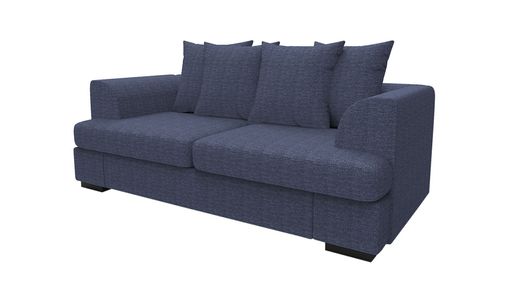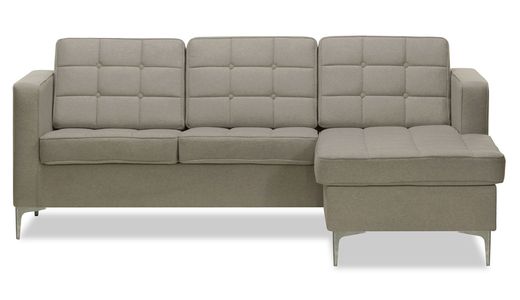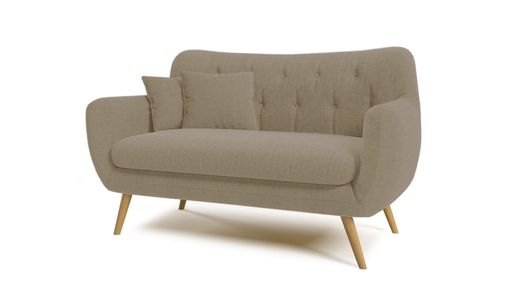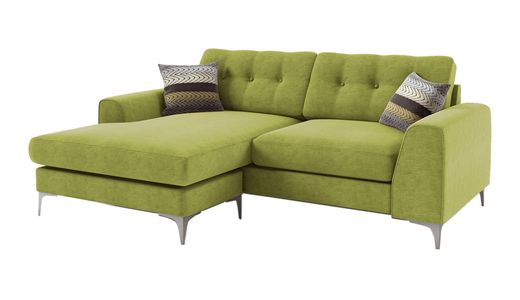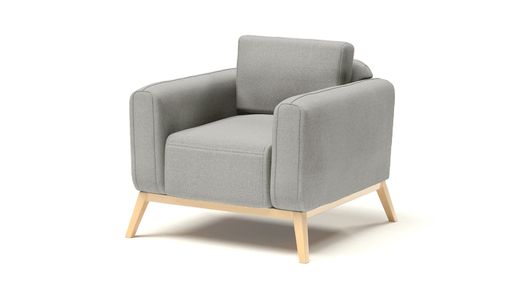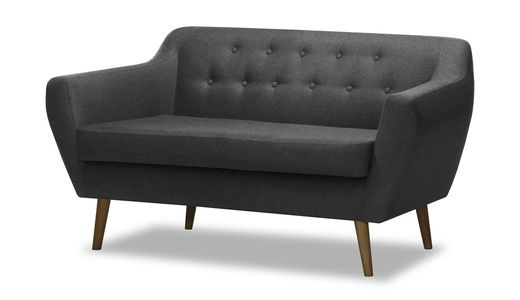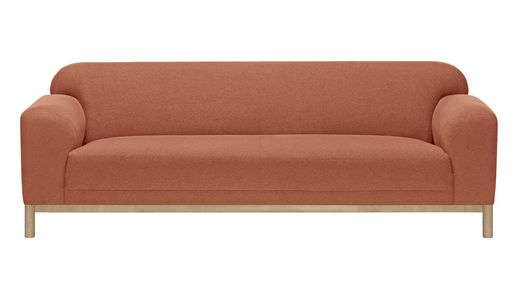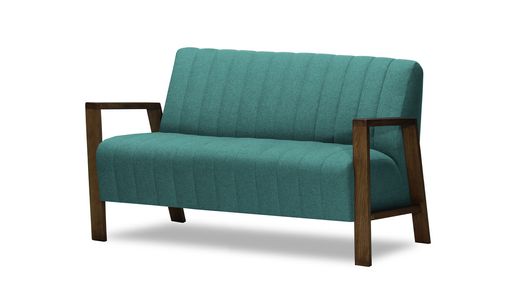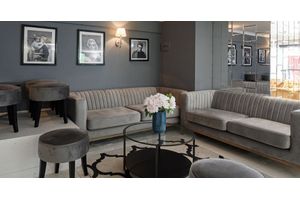
10 mistakes to avoid when buying furniture
Buying furniture is an important decision that affects the comfort and appearance of our interior for many years. While it may seem like an easy task to choose furniture, mistakes are often made that can lead to frustration, wasted money, and the need to replace furniture sooner. To avoid these pitfalls, it's a good idea to prepare well for the purchase, think through various aspects, and avoid common mistakes. Here are the ten most common mistakes made when buying furniture and tips on how to avoid them so that the selection and purchase process goes smoothly and brings the expected results.
1. Failure to adapt to the size of the room
One of the most common mistakes made when buying furniture is not matching the size of the furniture to the size of the room. When furniture is too large, it can overwhelm the space, making the interior seem cramped and non-functional. This is especially problematic in small apartments, where every inch of space matters. Improperly selected furniture can block passageways, making it difficult to move around the room, significantly reducing comfort. On the other hand, furniture that is too small in a large room can appear too modest and incomplete, failing to fill the space harmoniously.
To avoid this mistake, it is a good idea to detailedly measure the space in which you plan to set your new furniture before buying. You should also take into account other elements of the interior, such as windows, doors and fixed fixtures, to make sure that the furniture you choose will fit not only in size but also in proportion and layout. You should also consider choosing multifunctional furniture that can adapt to different needs, which is especially important in smaller rooms. Examples include sofa beds or coffee tables with additional storage, which will not only save, space but also increase the functionality of the interior.
2. Ignoring functionality
Another common mistake is to focus solely on the aesthetics of the furniture, ignoring its functionality. Choosing furniture based solely on its appearance can lead to a situation where beautifully presented furniture turns out to be completely impractical for everyday use. For example, a sofa with a stunning design, but a seat that is too hard, will quickly become uncomfortable, and an elegant table with a fine finish may prove unresponsive to scratches or stains. In everyday life, the most important thing is that the furniture should be adapted to the lifestyle of the users and to the specifics of the interior.
Therefore, it is worth considering what functions are to be performed by the chosen furniture and what are the real needs of the household members. For example, if there are small children at home, it is worth betting on furniture that is easy to clean and resistant to damage. For smaller spaces, multifunctional furniture, such as sofa beds that also function as beds, or tables with storage space, will be a great solution. The Jules 2.5 Seater Sofa Bed will be perfect as lounge furniture in the living room, and the unfolding function will allow you to turn it into a comfortable bed if necessary. The unfolding system with a fabric handle hidden inside the seat makes it much easier to unfold the sofa, without causing noise in the room. By choosing furniture that combines aesthetics with functionality, we are assured that it will not only look nice but also serve us for years, fulfilling its practical purpose.
3. Inappropriate materials
The material from which furniture is made is crucial to its durability, appearance, and comfort of use. Improper choice of materials can result in rapid wear and tear of furniture, its unsightly appearance, or difficulties in daily maintenance. Furniture made of cheap, low-quality materials, such as flimsy particle boards, can be prone to mechanical damage, leading to the need for replacement in a short time. On the other hand, investing in furniture made of solid wood or high-quality leather can bring long-term benefits, although it involves higher initial costs.
When choosing a material, it is also worth considering the specificity of the room in which the furniture will be used. For example, in the kitchen and dining room it is worth betting on materials that are resistant to moisture and easy to clean, while in the living room, you can opt for more elegant, but requiring regular care, fabrics or leather. It is also important that the furniture is tailored to the lifestyle of the users - for example, in a home with children, durable materials that can withstand intensive use will work better. This will make the furniture not only aesthetically pleasing, but also practical and durable, serving for a long time.

4. Ignoring the style of the interior
Furniture is an integral part of interior design, so its style should be consistent with the overall character of the room. Ignoring the style of the interior when buying furniture can lead to visual chaos, in which individual elements will not harmoniously harmonize with each other. For example, a modern interior with a minimalist design may be dominated by overly ornate, classic furniture, which will disrupt the entire design concept. On the other hand, in a traditional interior, modern furniture with strict lines may seem alien and out of place.
Therefore, before buying, it is worth carefully analyzing, what style we want to achieve in a particular room. Do we prefer modern minimalism, Scandinavian style, industrial, or perhaps classic? Each of these styles has its characteristic features, which should be reflected in the choice of furniture. It is also good to pay attention to the color scheme and texture of materials so that the whole arrangement is consistent. By choosing furniture that is consistent with the chosen interior style, we can create a harmonious and aesthetically refined space in which all elements complement each other.
5. Lack of consideration of ergonomics
Ergonomics is an aspect that should be a priority when choosing furniture, especially those that will be used intensively, such as chairs, desks, and sofas. Improperly selected furniture can lead to health problems such as back pain, spinal problems, or muscle strains that result from inadequate body support. For example, a chair with the wrong height can cause discomfort when sitting, and an ill-fitting sofa may not provide enough support for the back, which will affect our health over time.
That's why it's so important to pay attention to the ergonomics and customization of furniture before buying it. Chairs should have adjustable height, adequate lumbar support, and a comfortable seat that will not cause pressure. Desks should be high enough to allow you to work in a comfortable position without excessive bending. Sofas, on the other hand, should offer adequate seat depth and height to ensure comfort both when sitting and lying down. Ergonomic furniture not only makes everyday life more comfortable but also helps maintain a healthy posture, which is crucial to our well-being.
6. Neglecting the quality of workmanship
The workmanship of furniture has a direct impact on its durability, appearance and functionality. Low-quality furniture, even if it initially appears attractively priced, can quickly lose its value, succumbing to damage, deformation or wear. Improper finishes, poor joints or the use of cheap materials can cause furniture to need repair or replacement in a short period of time, generating additional costs and frustration. For example, drawers made of cheap board can deform quickly, and sofa seats can lose their form and resilience, significantly reducing comfort.
To avoid such problems, it is worth paying special attention to the details of the furniture's workmanship before buying it. Checking that the joints are solid and the materials are of high quality can save a lot of trouble in the future. It's also worth paying attention to the manufacturer's reviews and reputation - established companies often offer higher-quality products that will stand the test of time. By choosing carefully crafted furniture, we are investing in its longevity, which in hindsight proves more profitable than frequent replacement of cheap and perishable furniture.
7. Inadequate cost analysis
Buying furniture is an investment that should be detailed financially. It is often the case that a low price is tempting, but it can hide some pitfalls, such as lower quality workmanship or the need for more frequent replacement. Cheap furniture may seem advantageous at first glance, but in the long run it can generate additional costs for repairs, maintenance, or even early replacement. That's why it's a good idea to carefully analyze the total costs associated with purchasing furniture, taking into account not only the purchase price but also the cost of operation and maintenance.
In addition, it is important to make sure whether the price of furniture includes additional costs, such as delivery, installation, or possible maintenance. Often, it turns out that cheap furniture requires additional fees that raise the final cost of the purchase. It is also worth considering whether the purchase of more expensive but more durable furniture will prove more cost-effective in the long run. By investing in higher-quality furniture, we can avoid the need to replace it frequently, which, from the perspective of a few years, can bring significant savings.
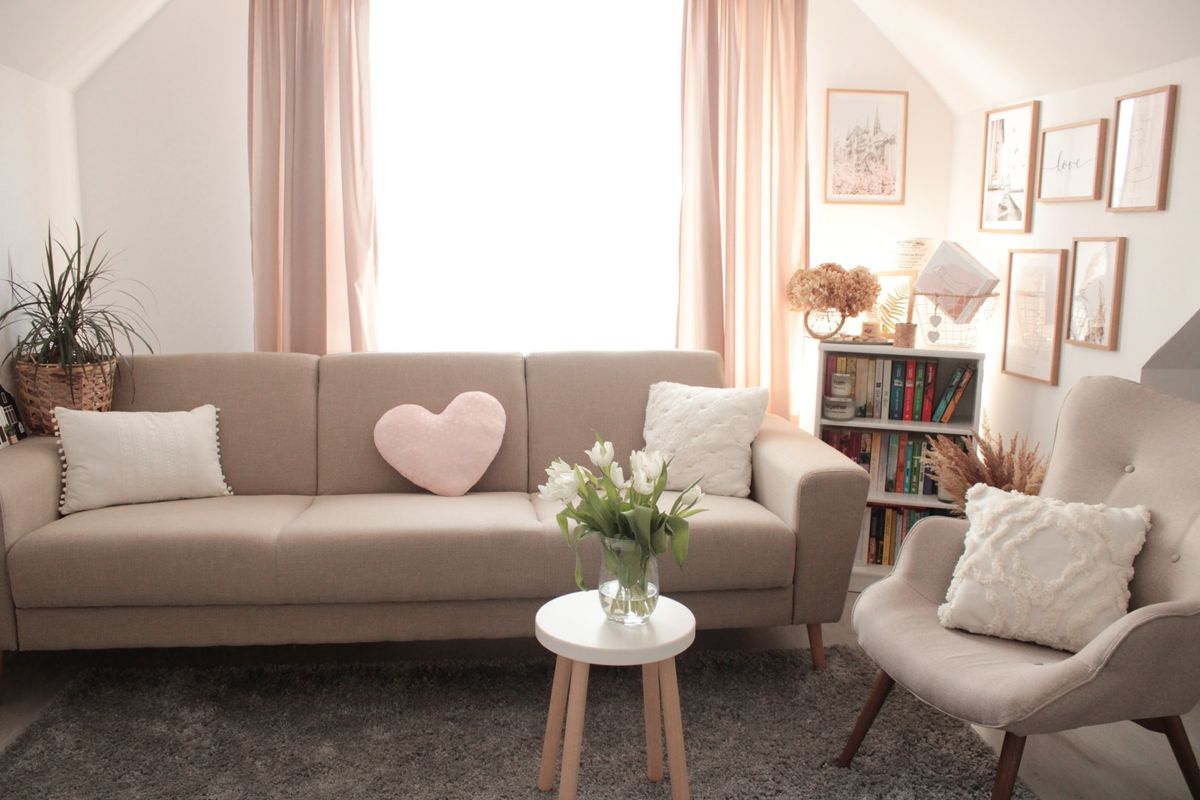
8. Improper fit with existing furnishings
When buying new furniture, it is important to consider its adjustment to existing furnishings. Improper selection of furniture in terms of style, color scheme or proportions can lead to the creation of an inharmonious space in which the various elements clash with each other. For example, a modern sofa in a minimalist style may not match the traditional, heavy furniture in the living room, which will create an impression of chaos and inconsistency. It is important that the furniture you plan to buy harmonizes with the overall arrangement, creating a harmonious and aesthetically pleasing space.
To avoid this mistake, it is worthwhile to detailedly analyze the existing interior design before buying new furniture. It is a good idea to pay attention to the dominant colors, materials, and styles so that the new furniture fits into the overall concept. You can also consider introducing elements that will combine the old with the new, for example, through accessories or accessories that tie together different styles. This will ensure that the newly purchased furniture is not only functional but also enriches and complements the space in which it will be placed.
9. Lack of consideration of future needs
Buying furniture is an investment for years to come, so it's worth considering not only your current needs when choosing, but also your future plans and possible lifestyle changes. For example, if you're planning to expand your family, it's worth thinking about furniture that will be able to serve in different stages of life. A sofa that seems perfect for a couple now may prove to be too small when children arrive. Similarly, if you're planning to move to a larger or smaller apartment, it's worth choosing furniture that will be easy to move and adapt to the new space.
Thoughtful purchases that take into account future needs allow you to get more out of your furniture investment. Instead of choosing temporary solutions that may need to be replaced in a few years, it is worth betting on flexible furniture that can be adapted to different situations. This will avoid the need to change the decor frequently and save money in the long run. It is also worth considering modular furniture, which can be freely configured according to changing needs, giving you more freedom in interior design. The Charles U-Shaped Modular Sofa is a comfortable piece of furniture with a modern form finished with decorative French stitching on the edges. The simple shape of the corner suits both minimalist and classic interiors.
10. Lack of plan and haste in decisions
The last but equally important mistake is the lack of a proper plan and haste when deciding to buy furniture. In a hurry, it is easy to make a decision that will turn out to be wrong in the long run. Buying furniture requires careful consideration, comparing different offers, and weighing all the pros and cons. Hasty decisions can lead to the selection of furniture that does not meet our expectations in terms of functionality, quality, or aesthetics. It is worth taking the time to analyze your needs, measure the space where the furniture is to be placed and familiarize yourself with the various options available on the market.
Avoiding haste and thinking carefully about every decision related to the purchase of furniture enables you to make a more informed and satisfying choice. It's also a good idea to consult with experts or an interior designer who can help match the furniture to individual needs and the specifics of the interior. It is also a good idea to consider various financing options to choose the most favorable one. This will ensure that the process of buying furniture goes smoothly, and we will be able to enjoy a beautiful and functional interior for many years.
In conclusion, buying furniture is a decision that requires care, planning, and consideration of many factors, from size and functionality to style and quality of workmanship. By avoiding common mistakes, such as ignoring room size, ergonomics or future needs, you can create a harmonious and comfortable interior that will last for years. A thoughtful approach to furniture selection not only saves time and, money but also makes our environment more welcoming and aesthetically pleasing.
